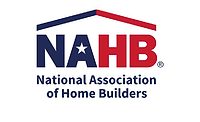Defining Moisture’s Cause and Effect




Let’s take a look at some of the issues so they can be defined.
Adhesives
The statement I hear the most is “It was caused by the water-based adhesives.” If you look at the evolution of adhesives, there has only been a few solvent-based adhesives available to the flooring industry. The first adhesives were for linoleum and were water-soluble; then came the alcohol-resin adhesives, which were recommended for below-grade slabs.
Next came the vinyl products and the first of the water-based adhesives. The first multi-purpose adhesive, S-235, was invented by Dr. Carlson at the Armstrong Cork Company in 1954 and, while now a different formula, it is still used today. The reality is that the adhesives today are far superior to the adhesives of old.
The problem is getting the adhesives to cure.
An adhesive can take several days to totally cure, but if there is a moisture condition it will start to appear in about 48 hours, and the adhesive never gets the chance to cure. Once cured, the adhesive has a tremendous resistance to slab moisture. In a 400-day moisture study conducted about 6 years ago, the solvent-based adhesive for VCT, which is still available, finished third out of the four tile adhesives tested.
Materials
There have been a lot of changes to resilient sheet products, especially in the backings. We went from jute to rag felt to asbestos to mineral felt to vinyl-backed. And with linoleum, we still have a jute backing. Of all of these backing, the asbestos was the most resistant to moisture because it was dimensionally stable, would not rot or decay and worked as an excellent blotter, in the presence of moisture.
If asbestos was available today, it would also have issues due to the amount of moisture we have to deal with.
There is no doubt the materials available today have less permeability than materials of old. This is due, in part, to the finishes used on the surface of the materials for ease of maintenance.
Value Engineering
The “low-bid-spend-anything-to-fix-it” mentality rears its head constantly in all areas of the construction industry. They buy cheap vapor retarders, lower grades of concrete and follow the pathof least cost in its placement.
Vapor retardersshould be a minimum of 10-mils, yet we see 4-mil, 6-mil, and 8-mil products used every day. Vapor retarders should be a polyolefin rather than polyethylene. Polyethylene exposed to UV light will start to decay after 48 hours of exposure, and the decaying process does not stop after it is covered.
I have observed the condition of a vapor retarder after a slab has been removed and it looked like large flakes of plastic. In some areas of the country, especially the desert Southwest, they do not feel the need for a vapor retarder. The arid climate is the worst areas for moisture vapor issues.
Concrete mix designs. Concrete is available in a multitude of mix designs and two-grades, gap-graded and well-graded. A well-graded mix design is more costly, but helps solve some of the slab curl and cracking issues, provided it is cured properly.
Next, the flooring industry recommends a water-to-cement ratio less than a 0.50. ASTM F-710 recommends water-to-cement 0.40 – 0.45, yet the average water-to-cement ratio for on-grade slabs is 0.58. A water-to-cement ratio that high weakens the concrete and it takes longer to dry, but it is easier to place and finish.
Concrete curing. Curing, sealing and parting compounds, if used, need to be removed. Curing and/or sealing compounds are designed to hold moisture in the slab for curing of the slab; unfortunately, it also delays the drying of the slab.
Communication Gap Between Divisions 3 and 9
The people specifying the concrete mix design (Division 3) have no idea what type floor covering, if any, is going to be specified (Division 9). I have seen concrete specifications for warehouse floors that were to receive a moisture-sensitive flooring. It failed.
Fast-track Construction
This is the number one problem. In the past decade, construction schedules have been compressed 30 percent. And guess who is on the far end of that timeline? The fact remains you can only dry concrete so fast; once you cross that line and accelerate the drying, all kinds of problems start to occur, namely curling and cracking.
Disregard for the Specifications
Flooring contractors allow themselves to be coerced into starting the job regardless of the job conditions. Remember, if you start the installation and accept the slab, it is your problem.
Lighting, heating and/or cooling all need to be up and stabilized. Even more important, the slab needs to be stabilized.
Finally, and most important, the slab needs to be tested accurately for moisture.
Moisture Mitigation Treatments
There are a lot of moisture-mitigation treatments on the market. They are basically coatings and penetrants. Along with these products come claims of immeasurable quality and how they will work wonders. Don’t be fooled; there is a lot of snake oil out there.
Research the product that is either already down or is going to be installed. If necessary, make sure the manufacturer is responsible for the product being placed. I have seen too many instances where the flooring installation gets the blame for a failed moisture treatment.
It does not matter what material you have, or what adhesive you are using; if the conditions are right, you will have a successful installation. If you look at the number of installations that are successfully completed every day, you can rest assured that there are a lot of flooring contractors who arefollowing the rules.
Looking for a reprint of this article?
From high-res PDFs to custom plaques, order your copy today!








